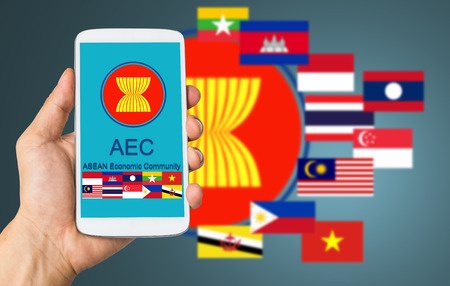26 April, 2016
In order to maximise the scope of financing options in an interconnected global economy, many companies today require access to regional capital markets, whether they are in the search for new investors in foreign markets or reaching out to existing shareholders located in foreign jurisdictions. Previously, the only regional market where this can be carried out with an integrated and harmonised model is that of the European Union. In this respect, a company offering cross-border securities elsewhere will have to deal with various regulatory burdens with serious criminal and civil consequences upon a failure to comply with any applicable securities regime.
Today, the other comparable regional market in which this can be done is that comprising the member countries of ASEAN. On 2 September 2015, the Monetary Authority of Singapore and Singapore Exchange, together with the Securities Commission of Malaysia and the Securities and Exchange Commission of Thailand, jointly issued a handbook to implement the streamlined review framework for the ASEAN Common Prospectus (the “Framework”).
The Framework offers the most benefits to issuers within the ASEAN region who wish to stage a multi-jurisdictional offering of equity or plain debt securities.1 As at the time of writing, the three participating ASEAN countries are Singapore, Malaysia and Thailand. Other ASEAN countries will likely opt-in as a signatory to the Framework at a later date.
The Framework seeks to reduce the time taken for ASEAN issuers to offer cross-border securities and also facilitates rapid access for issuers to tap capital across ASEAN. Take a Singapore company for example – in order to broaden the investors’ base to meet its fund raising requirements, it could have its shares listed in Singapore but it may want to offer its shares not only in Singapore, but also Malaysia and Thailand, given that the three ASEAN countries have a combined population of 105.48 million and a combined nominal GDP of USD981 billion (as compared with Singapore’s population of 5.52 million and nominal GDP of USD294 billion).
Until the present initiative was launched, any offering into the combined markets of Singapore, Malaysia and Thailand required the preparation of individual prospectuses that complied with the distinct legal requirements of each of the markets. This significantly added to costs for an issuer.
This practical difficulty was partially addressed in 2009 when Singapore, Malaysia and Thailand came up with a set of common disclosure standards. However, at that point in time each country remained entitled to impose additional requirements over and above the agreed common standards. These so-called plus standards meant that the disclosure laws in each market were still not fully aligned, and that an issuer offering into more than one market would still have to take into account the plus standards.
Hence, transactional costs and regulatory obstacles remained in as much as the issuer could not prepare a single offering document that fully met the requirements of each of these markets. Although the additional disclosure requirements were removed in 2013, there was still no framework in place to establish a streamline review of the prospectus among the participating countries. This meant that potential time delays and uncertainty became a huge drawback despite the common disclosure standards.
Benefits
The benefit of the Framework is immediately obvious. An issuer who wishes to offer securities in Singapore, Malaysia and Thailand will only need to prepare a common prospectus which would fully accord with the disclosure laws of each of the three markets. The regulatory body of the country in which the primary listing takes place will be the point of contact for the issuer. This point of contact will then collate any disclosure-related comments in relation to the common prospectus from the other participating countries’ regulatory bodies and communicate these comments directly to the issuer, enabling the issuer to deal with only one point of contact.
This has huge potential for issuers and will benefit issue managers, law firms and auditing firms that have operations and subsidiaries across Singapore, Malaysia and Thailand. It is anticipated that issuers will appoint an accredited issue manager in their primary listing venue and the issue manager will then coordinate with their respective affiliates in the other ASEAN countries to ensure compliance with the regulatory requirements to offer securities in these countries. Thus, an issuer who intends to offer cross-border ASEAN securities is well-advised to select issue managers and legal advisors with a wide range of networks, capabilities and connections within the ASEAN region for a more seamless and integrated experience.
However, the absence of a regional regulatory or coordinating agency continues to be a drawback. An issuer offering securities into more than one of the participating country must still prepare individual applications (but now only one common prospectus is required) and submit them to the various regulatory bodies concurrently or within 1 business day of the submission of the first application. There is currently no integrated body where the issuer may file applications with – the issuer has to make individual applications to the respective authorities if it wishes to offer cross-border securities. Despite this, it is anticipated that increasing and greater cooperation among ASEAN countries will eventually remove this hurdle.
Considered together, ASEAN is the seventh largest economy in the world and the third largest in Asia. Once fully developed with the participation of the remaining ASEAN countries, the Framework is expected to increase the ease by which equity and plain debt fund raising may be conducted.
1 As defined in the ASEAN Debt Securities Disclosure Standards dated 1 April 2013, plain debt securities refer to bonds or Sukuk Ijarah which have specified characteristics, such as non-convertibility and denomination in any currency.






